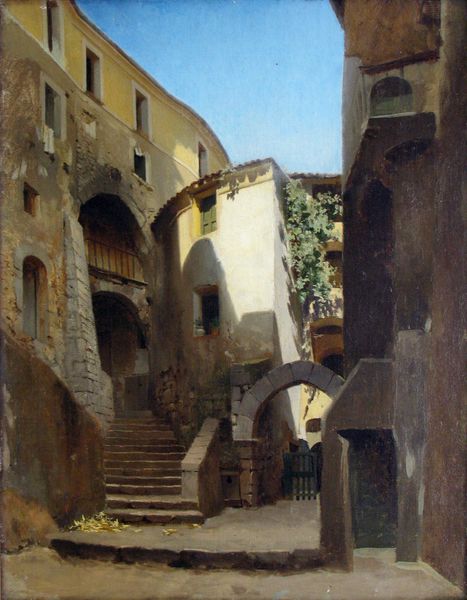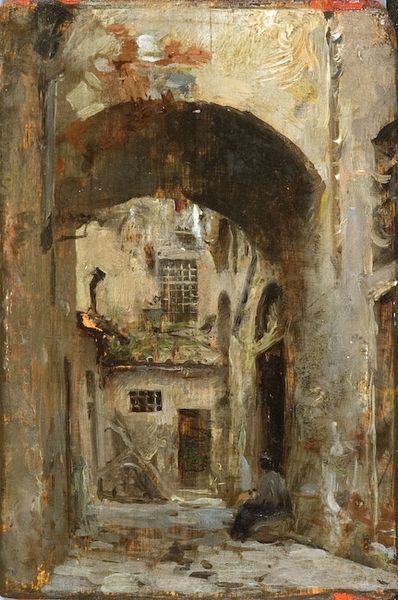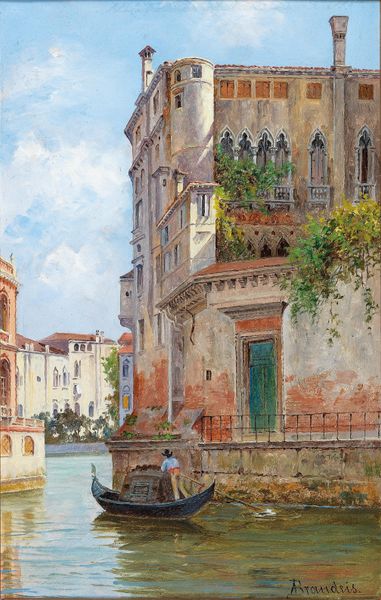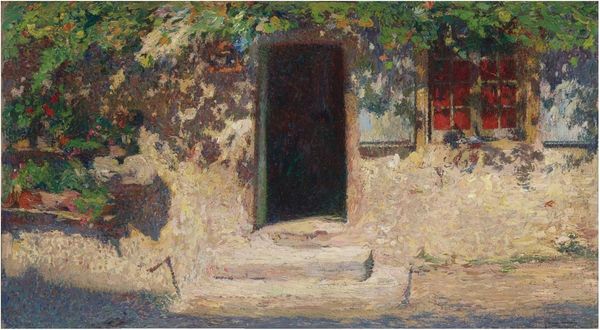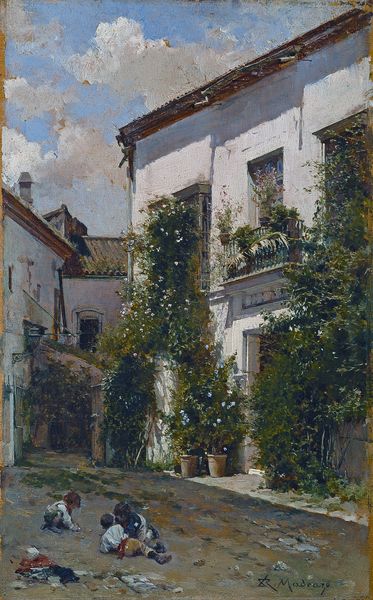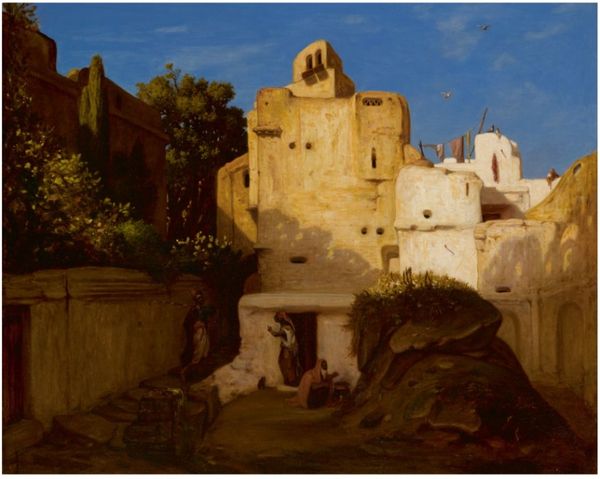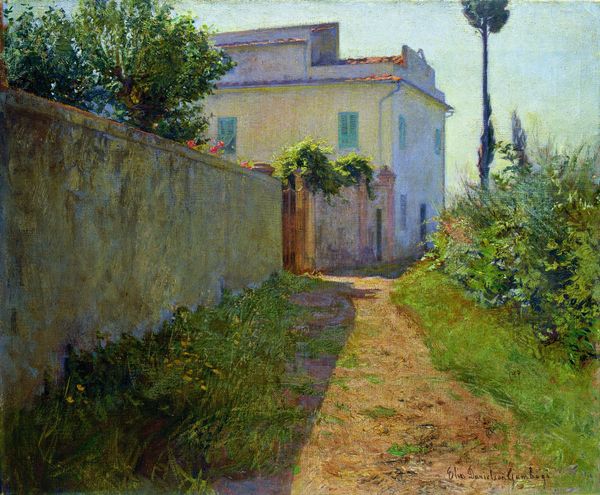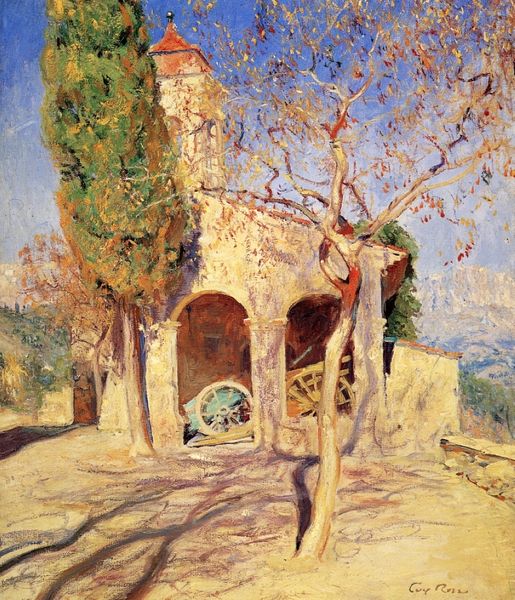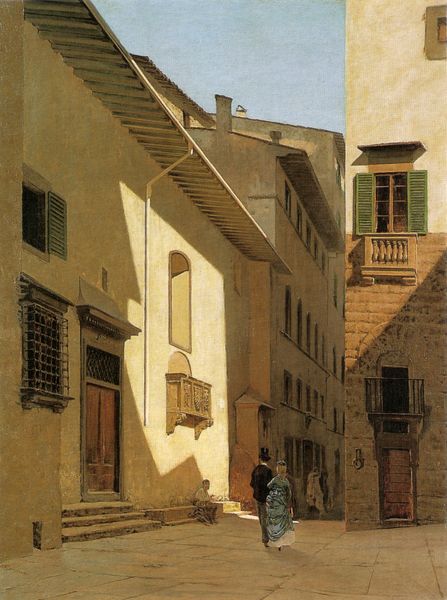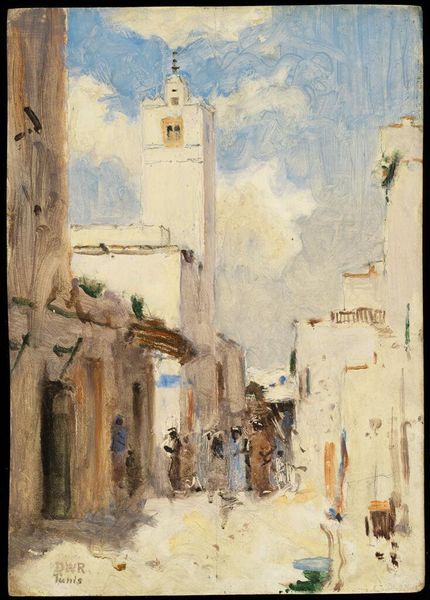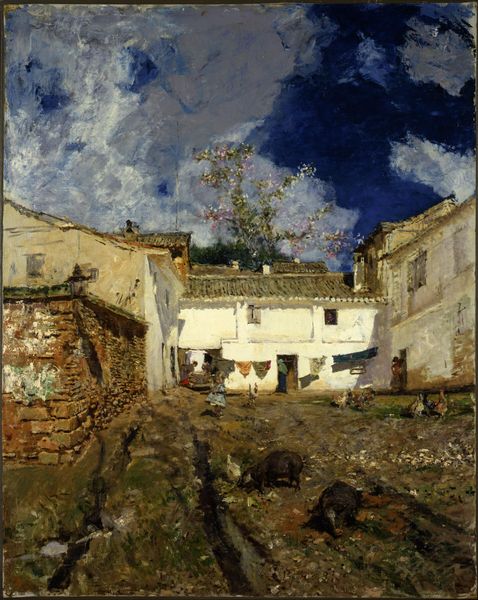
painting, oil-paint
#
painting
#
impressionism
#
oil-paint
#
landscape
#
oil painting
#
arch
#
orientalism
#
genre-painting
#
academic-art
Copyright: Public domain
Curator: This painting is Tom Roberts’ "A Moorish Doorway," created in 1883. It exemplifies his fascination with light and shadow, and it provides us insight into the Australian artist's travels in Europe and his encounters with Orientalism. Editor: My immediate reaction is that the doorway appears as a framed, picturesque vignette—an exotic yet carefully controlled view for a Western audience. The light catches on the archway's intricate carvings, but what lies beyond remains concealed, a dark, inviting mystery. Curator: Indeed. The artwork aligns with the orientalist style prevalent at the time, and we have to see Roberts’ work through that lens. What seems like a picturesque scene is actually deeply rooted in colonial narratives. Editor: Precisely. And it's more than "just" a doorway. Roberts, though Australian, was exhibiting a typical Western gaze upon a culture. The architectural detail, likely somewhere in Spain or North Africa, is rendered with a focus on perceived exoticism. This raises complex questions about appropriation and representation, doesn't it? Who is this painting for, and what does it say about their worldview? Curator: Context is important, here. The late 19th century was marked by increasing European colonial expansion. Roberts himself was an immigrant to Australia, where, similarly, he engaged in the appropriation of indigenous land and resources, but the focus of "Moorish Doorway" tells us as much, if not more, about European art production than other lands or peoples. It reflects what European patrons desired and rewarded. Roberts was keen to make a living from his painting. Editor: Absolutely. While the brushstrokes evoke a feeling of airy, sun-drenched tranquility, the work exists within a larger narrative of cultural power and misrepresentation. We must unpack that, and the impact of its ongoing display within a museum, even when the scene and the artist's history are, seemingly, innocuous. The aesthetic pleasure should come with a heavy dose of awareness. Curator: It highlights the ongoing role that museums play in critically assessing how historical artworks fit into contemporary dialogues on identity, politics and power. Editor: A pretty doorway, but also a portal to bigger, and more complicated, questions.
Comments
No comments
Be the first to comment and join the conversation on the ultimate creative platform.
